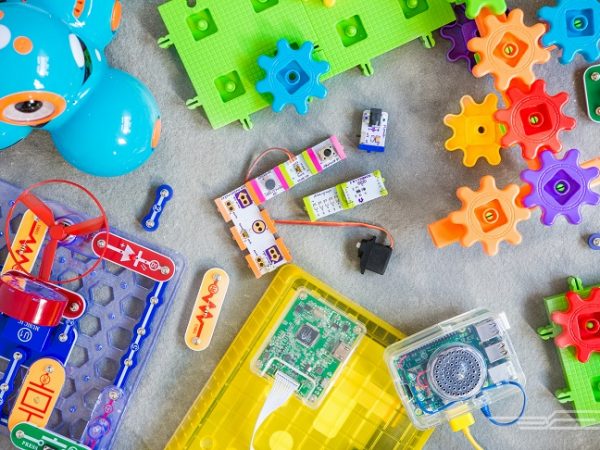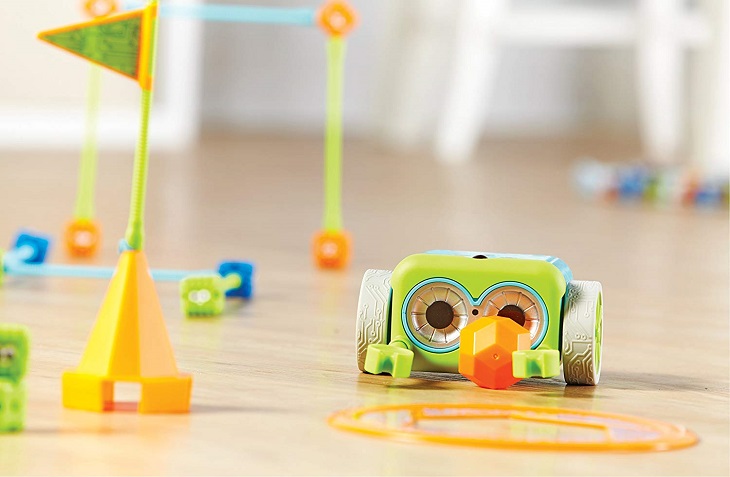04
Dec

Playing is an integral part of children’s development. Even the simplest games we play with our children serve a much bigger purpose than just amusement. Toys and games, no matter how simple, can play a big role in the development of children’s language, communication, motor skills etc.
Even adults can learn better through play, but for kids, play is essential for learning. It’s the way they experience the world around them. With the help of games they gradually discover how the world looks and works. They can learn the basic concepts of mathematics and science, like counting, with the help of blocks, shapes, balance with a balance board, as well as problem-solving with puzzles.
“Play is the highest form of research” – Albert Einstein
Children’s curiosity and ability to absorb knowledge through play is something that should be taken seriously by parents and caregivers. It can be nurtured in a way that will provide the child with a strong foundation for their future education, and professional development. And this is where children’s educational toys and games, also known as STEM, come into play.

STEM education is a curriculum choice in schools, that stands for four academic disciplines: science, technology, engineering and mathematics. Basically, it’s a way to learn a range of disciplines in an intertwined manner, rather than learning them separately, through real-world applications.
Though somewhat controversial, with some claiming to be the best approach, to fill a gap of shortages of graduates in these fields, and others claiming that’s not really the case, one thing is certain – the STEM approach aligns perfectly with the way children learn about the world.

STEM toys are specifically designed to teach kids through fun the four academic disciplines – science, technology, engineering and mathematics. As such, different toys will have different focuses: from the simpler ones, focused on learning about shapes, coordination, and simple logic, all the way to coding, robotics, chemistry, mechanics, construction, maths etc.
With the rapid change of the world and the digital and technology revolutions, these are all things that children should start to understand from a young age in order to be able to function in the world better. However, these are complex notions that the young brain will have trouble figuring out. That being said, with children’s educational toys and games, pre-schoolers can progressively develop motor skills, language skills, logic, robotics, coding etc. through genuinely fun playing.

Educational toys have existed since always, but STEM-based products have gained a lot of popularity in the last years, making it harder and harder to choose a toy that’s right for your child. So, what should you consider when choosing such toys and games?
It’s obvious that age is the first factor to take into account in order to find toys or games your child will accept. For older kids, of course, you can just ask, and not always, but sometimes they will know what will really interest them. However, beware of buying something too complicated for their age, so as not to make them feel frustrated.
However, for younger kids, it can be a little bit more difficult. Children are not copies of one another, so just like with clothes, not all labels match all children. Use the age indications as guidelines, rather than strict rules.
Playing with your children and knowing what they consider to be fun, as well as trying to understand their predispositions as much as possible will help you choose a toy that works in a way that your child already enjoys. Furthermore, to prevent your child from developing aversion towards some subjects, you could try different fun things to incite their curiosity and to encourage their learning.
To do this you can also opt for educational games for kids that can include the family. You know how much your child wants to spend time with you, and play with you. Try to find family educational games, not only to add more learning to your playtime, but also to teach your child to play with others, cooperate, share, in other words – to further develop their social skills.
How many incredible questions are you answering every day? Take advantage of your child’s desire to know the “whys” and the “hows” of everything, and try finding toys and games that will let them have fun while experimenting, exploring, finding answers on their own, thus developing their self-reliance, self-esteem, critical thinking and imagination.
Though this one is an obvious one, it’s worth mentioning. Physical activity is essential for kids development. So, besides getting them things like a micro scooter to keep them moving, also consider getting STEM toys that will activate them. Pick toys and games that instead of making them a simple observer assign an active role as an explorer, builder, scientist etc.